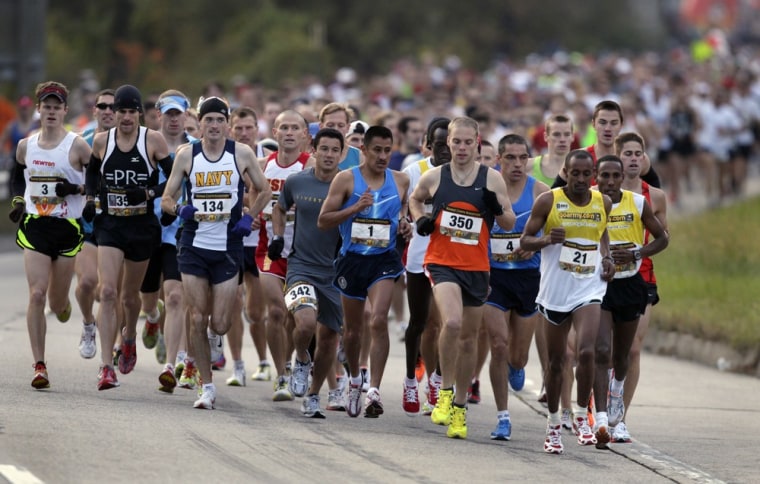A few weeks before her first marathon, Kristel Crame bought a trendy purple polish to cover her toenails, one of which she'd bruised on a long training run.
But as she started her at-home pedicure, "I noticed a toenail seemed a bit loose. It seemed like the bottom part was connected and the top part was all lifted up," she said. Even stranger: A new, normal toenail was growing underneath the unhinged one.
This month, as runners across the country put the finishing touches on their marathon-training regime, thousands will share the experience of losing a toenail. Also known as "black toenail" and "runner's toe," it's a harmless occurrence, according to Dr. Marybeth Crane, a Texas podiatrist and board certified foot surgeon who has run dozens of marathons and triathlons over the past 32 years.
For many runners, when the old-and-busted toenail falls off, they find what seems to be a "backup toenail" underneath. But we don't actually have replacement toenails waiting in the wings: When a toenail is bruised, it stops growing but stays attached.
"We actually have matrix cells in the nail bed, that's where the new toenail comes from, and it literally pushes off the old one" as it grows, Crane explains. The dead toenail stays on to protect the sensitive skin.
Nail bruises can be caused by anything from ill-fitting shoes and socks to a plodding stride or hammer toes. Even perfectly fitted shoes can be a problem: Over the course of a marathon, feet can swell half a size or more.
Crane calls black toenails "one of life's minor annoyances" that can be avoided by keeping toenails clipped, buying long-distance shoes a half-size large and ensuring the toe box accommodates your foot properly.
Though losing a toenail poses no harm, Crane has two important cautions. First: No bathroom surgery. "All of the Internet is going to tell you to light a match on a needle and stick it under the toenail" to drain the bruise. Do that and you’ll likely get an infected, swollen toe that needs medical attention.
Second: If your toenail develops a dark line that does not grow out or disappear, see a doctor right away. "There is a very rare form of melanoma that will happen underneath the toenail" that can be deadly if left untreated.
With all her expertise and precautions, even Crane has lost a few toenails over her decades-long running career: Four, actually. As for Crame -- the runner -- she now coaches beginning marathoners in Seattle, making sure to school them on the art of losing a toenail.
Are you a distance runner who's in mourning over a lost toenail? Do tell.
